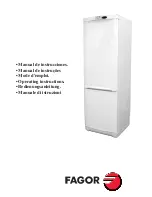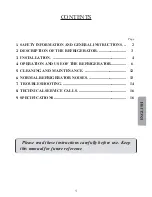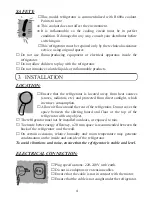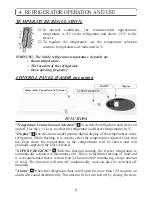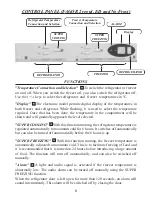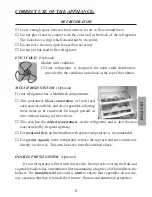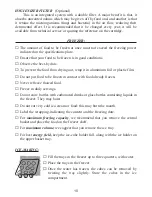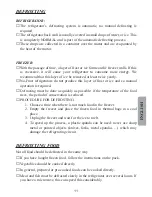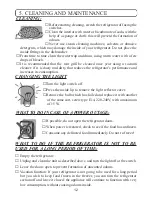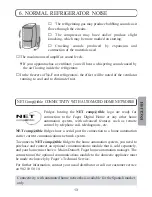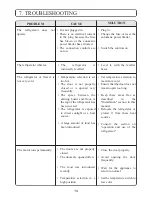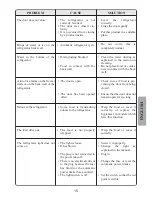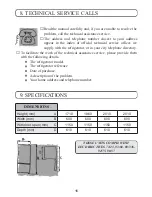
11
DEFROSTING
REFRIGERATOR:
➭
The refrigerator’s defrosting system is automatic, no manual defrosting is
required.
➭
The refrigerator back wall is usually covered in small drops of water, or ice. This
is completely NORMAL and is part of the automatic defrosting process.
➭
These drops are collected in a container over the motor and are evaporated by
the heat of the motor.
FREEZER:
➭
With the passage of time, a layer of frost or ice forms on the freezer walls. If this
is excessive, it will cause your refrigerator to consume more energy. We
recommend that this layer of ice be removed at least twice yearly.
➭
No-Frost refrigerators do not produce this layer of frost or ice and so manual
operation is required.
➭
Defrosting must be done as quickly as possible; if the temperature of the food
rises, the period of conservation is reduced.
➭
PROCEDURE FOR DEFROSTING:
1. Choose a time when there is not much food in the freezer.
2. Empty the freezer and place the frozen food in thermal bags in a cool
place.
3. Unplug the freezer and wait for the ice to melt.
4. To speed up the process, a plastic spatula can be used: never use sharp
metal or pointed objects (knives, forks, metal spatulas …) which may
damage the refrigerating circuit.
DEFROSTING FOOD
Not all food should be defrosted in the same way
➭
If you have bought frozen food, follow the instructions on the pack.
➭
Vegetables should be cooked directly.
➭
In general, prepared or pre-cooked foods can be cooked directly.
➭
Meat and fish must be defrosted slowly in the refrigerator over several hours. If
you have a microwave, this can speed this considerably.
ENGLISH

